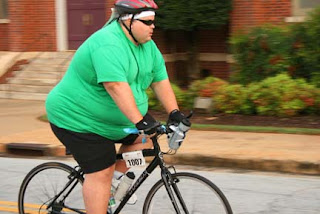Cyclists over 60. Fastest growth of any Demographic
By Mark Cramer, retiree, cycling advocate, regular contributor to Freewheeling France
22 percent of the net growth in U.S. bike trips from 1995-2009 is by people ages 60-79. Their biking quadrupled in those 14 years, the fastest growth of any demographic.
During the past 17 years I’ve been cycling on a regular basis. As I’ve aged (I’m 72 now), I have observed an increasing population of senior cyclers around me, especially in France, my home base.
Recently in Paris I presented a slide show on Cycling in Bolivia. The canyon city of La Paz, Bolivia, where I live for six weeks each year, is 12,000 feet above sea level, has no bike lanes and if you find a rare flat street, it’s never going where you need it to. Given the challenge of cycling in an area with sometimes many thousand foot variations in altitude, I expected a younger crowd to attend the presentation. Instead, the audience was comprised mainly of seniors. Mingling with them I learned that their retirements are enriched with adventurous bike trips around the world.
Derren Patterson works in Bolivia with Gravity Assisted Mountain Biking, famous for its bike tours over “the world’s most dangerous road”. He tells us: “we have observed a gradual increase in senior customers in recent years. Just a few weeks ago, two men in their 70s did various mountain trails with us.”
In my frequent interactions with senior cyclers I have noticed an increasing interest in a certain category of travel called “micro-adventures”. They will not cycle for a year from Alaska to Ushuaia, but they love trying something they’ve never done before, breaking routines and thus playing tricks with psychological time in order to expand their lives.
At talks I’ve given to cycling tourists in the Loire Valley, through International Bicycle Tours (IBT), I found the audiences comprised mainly of boomers, with one woman over 80! IBT’s Jules Miller explains that their “clients have consistently been about the same age, which is between 55-75. In the past couple of years, we have started 70 Plusser tours, aimed at participants age 70 and up, focusing on shorter daily biking. Instead of 25-35 miles a day, they do about 15-20 miles daily,” blending the cycling with river barge segments or cultural visits.
Dozens of tour companies like the above-mentioned offer fully-supported bicycle adventures with the sturdiest and most comfortable high-end bikes. Backpacks or panniers are not necessary since the customers’ belongings are carried in a pick-up truck.
If supported bike tours are “the new golf”, as numerous business publications have suggested, what about the increasing number of 60-plussers doing unsupported bicycle tourism? Could independent road cycling for seniors become the new cruise industry, with bike-friendly “ports” along the way?
I have accompanied seniors on unsupported touring, where we carry our own clothing and accessories (and medications!). We make our own maps as we go along, comparing our “found” routes with those of National Geography Institute contour maps or Google bicycle routes.
But when the sun sets after a long ride, we prefer a good restaurant and we’re not embarrassed to stay in a comfortable hotel or bed-and-breakfast instead of camping out. Stopping for activities along the way is not a problem for us since we view the bicycle as both an activity in itself and a means of vacation transportation. We do not have to wait until the next port to partake of local attractions.
I do not pretend to speak for a whole demographic, but I can say that several of my riding companions share a dream. We would like to see a road cycling infrastructure of rest-and-service stops, including restaurants, hotels and bike repair stations.
With the weight of our first-aid kits and the extra levels of packed clothing (we’re more sensitive to weather changes), we would prefer to carry the lightest possible bike locks, even with a lower grade of security, once assured of finding hotels, restaurants and attractions with protected parking.
According to bicycle sales rep, Keith Stark, from Western Canada: “Our dealer base has seen a significant spike in sales from business men and women who have made the transition from golf to biking” (Quote from, Jayson MacLean, “Golf is Dead. Cycling Killed It”, Cantech Letter, May 2017). Stark specializes in high-end bikes.
As one who has come out from a meeting in a wealthy Paris suburb only to find a sawed off bike lock (professional job) and empty space where my quality bicycle had been parked, I will be ready to purchase another high-end bike when I know I will find road and parking services for cyclists, just as automobile tourists have such services available.
The bicycle industry is in a position to be our advocate and to influence both public and private sectors to provide amenities for the growing demographic. Parts of France already have such cycling amenities, and they can be a model for things to come.
In a subsequent article I will present a new idea for long-term bicycle advocacy that will stimulate cycling in all age groups, but especially 60-plussers. The more bicycle tourists, the more security we will feel on the road.




Comments
Post a Comment